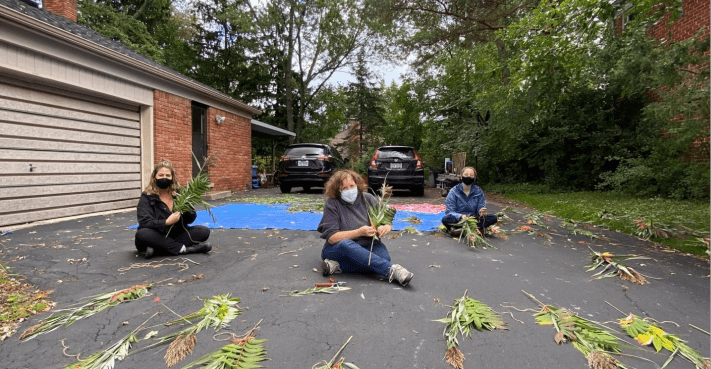Dear Friends,
Our rabbis say (Tosafot, Suk. 37b) that when we shake the lulav and etrog on Sukkot, “the trees of the forest sing with joy.” So that got us to wondering, what are the conditions that might allow the trees around us to sing with the greatest amount of joy during this holiday season that just passed? Every year on Sukkot, the US imports upwards of 500,000 lulavim from Israel and Egypt so that we can construct our traditional lulavim bundles using the familiar palm fronds, willow, myrtle, and citron. This combination of species has become so definitional that most of us probably don’t even consider that a lulav could be constructed any other way. But the original text is not so clear. In Torah (Lev 23.40), where we’re first told about the four species, the text simply says:
לְקַחְתֶּ֨ם לָכֶ֜ם בַּיּ֣וֹם הָרִאשׁ֗וֹן פְּרִ֨י עֵ֤ץ הָדָר֙ כַּפֹּ֣ת תְּמָרִ֔ים וַעֲנַ֥ף עֵץ־עָבֹ֖ת וְעַרְבֵי־נָ֑חַל וּשְׂמַחְתֶּ֗ם לִפְנֵ֛י יְהוָ֥ה אֱלֹהֵיכֶ֖ם שִׁבְעַ֥ת יָמִֽים׃
On the first day you shall take the fruit of beautiful trees, fronds of palm-shaped trees, branches of woven trees, and valley-willows, and you shall rejoice before YHVH your God for seven days.
Nowhere does it determine, at its linguistic core, the particular species that are to be shaken. That was a later rabbinic interpretation and discussion. So then, returning to our original question: What are the conditions that might allow the trees around us to sing with the greatest amount of joy?
Importing 500,000 lulavim from over 6,000 miles away could produce an estimated 50 metric tonnes of carbon pollution. Does that add to the joy of the singing trees? Shaking a bundle of plant life where only one of the four species – willow – grows in Michigan – does that make for joyous tree singing? Or what would it look like and feel like to harvest species that grow nearby with our own hands, and assemble a lulav bundle that pays homage to Michigan’s local plant-life, while honoring the Torah roots of the lulav instruction? On Sukkot, we shake the lulav to bring down rain from the sky to water our crops and give us new life come spring. Do we think we’ll be able to conjure more rain with plants that are foreign to this soil, or plants that were once rooted in this soil? We asked: How might using local lulavs impact our ability to connect with the earth that surrounds us and how might using local lulavs impact the forest’s ability to “sing with joy”?
With all of this in mind, Hazon Detroit supplied over 115 local lulavs and local lulav education to eleven Metro Detroit Jewish organizations this Sukkot. All of the educational materials and more resources on how to construct your own local lulav can be found below.
Of course, this is just one example of what it might look like to continue to reimagine and reconstruct a Judaism that is responsive to the natural world around us, and that is responsible to the global environment that we all share. How could this concept extend to other Jewish rituals and celebrations? How might it apply to other consumer choices that we make in our day to day lives? How might we continue to focus in locally on our communities, our neighbors, and our natural environment?
Hazon Detroit is doing just that this month. Although the High Holidays have passed, we continue to remain hard at work, rescuing food, providing education and experiences for our community, and trying to do as much good as we can in the world, with an emphasis on what’s happening right outside our doors. We hope you’ll join us and are grateful for your continued support!
In loving community,
Rabbi Nate, Wren, Marla, Brittany, and Hannah





Comments are closed.